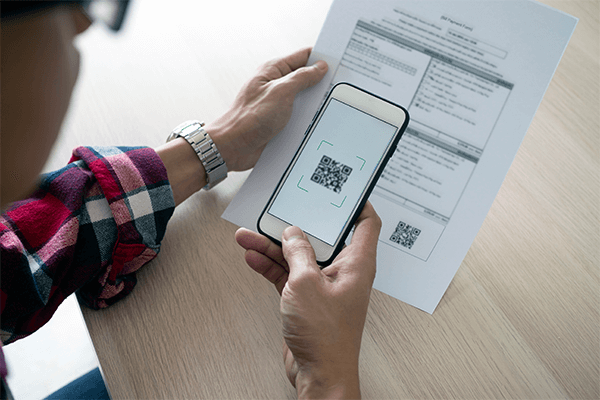 Technology allows us to use our phones to watch movies, order everything from couches to cookies, and even work with people all over the world, which might lead you to believe that direct mail is being left in the dust with the dinosaurs.
Technology allows us to use our phones to watch movies, order everything from couches to cookies, and even work with people all over the world, which might lead you to believe that direct mail is being left in the dust with the dinosaurs.
But it’s not.
While digital ad spend in the U.S. is expected to reach $298.4 billion in 2024, one of the most effective marketing campaigns dollar-for-dollar still remains direct mail. While you shouldn’t ignore the power of the digital world, the fact that more than 76% of people surveyed trust direct mail more than other forms of marketing communication mean that you also shouldn’t ignore direct mail.
But how do you know if your direct mail campaign is effective?
The ability to track the ROI — both in terms of cost and performance — is vital to understanding how well your mailer performs and to help maximize your print spend. Integrating a number of digital components into your direct mail campaigns can help you better understand the ROI of your direct mailers. Here, we’ll look at how a couple of digital integrations can help brands track the ROI of direct mail campaigns.
Custom URLs
One of the simplest digital integrations in direct mail is adding a short, memorable custom URL to each piece of mail in your campaign that drives users to a custom landing page on your website. Because you can use your website’s existing analytics tools, access to this additional tracking data for the custom landing page comes at virtually no additional costs.
Custom URLs also provide a one-two punch of driving people to your website — where they’ll hopefully convert — while also measuring the performance of your direct mailer via the number of website visits and clicks.
QR codes
More than 100 million quick response (QR) code scans are expected annually by 2025, making it one of the most popular — and simple — ways to evaluate direct mail performance. With a unique scannable code added directly to a piece of mail, you can send the user to a page on your website where they can make a purchase, download a coupon, watch an instructional video, or connect with a member of your sales team. It’s a way to make your direct mailer more dynamic and interactive, while also streamlining the path to take action.
Similar to a custom URL, you can use the website analytics you already have to measure page visits by those who have scanned the direct mail QR code. But unlike using a custom URL, the consumers don’t have to actually enter a website address — they simply scan a code right on their phone and are instantly engaged.
Augmented reality
Augmented reality (AR) can add immersive content to direct mail in a way that makes it more entertaining and interactive for the user, while also providing a way to define and track the results of your mail campaign — whether it’s website visits, conversions, or a variety of other predetermined tracking codes specific to your situation.
Any item can be AR-enabled as long as it can include a QR code that links to a URL. The basic idea is that a visual “trigger” is added into your mail piece, which then can be activated with your customers’ smartphone camera. The result is print material that transforms into a fresh, immersive experience that helps marketers show their product in a new light.
For example, automotive manufacturer Audi is already using AR on customer brochures that transform into a dynamic format, highlighting their new cars’ key features and innovations in exciting ways.
Near-field communication
If you’ve ever used Google Pay, Apple Pay, or Samsung Pay, you’ve already been introduced to near-field communication (NFC). While it’s popularized by mobile payments, savvy brands are also using it to bridge the gap between the physical and digital worlds. It offers an instant connection and simple integration for users, and a new way to gain real-time reactions and data for marketers.
Direct mail pieces are created with NFC-enabled materials, and when a user places their smartphone within about four inches of the NFC chip, they’re instantly connected to a brand’s online presence — whether that’s social media pages, landing pages, or a unique discount or promotion included in the direct mail. Consumers don’t have to download an app, enter a specific URL, or even be on a computer to engage with the offer and brand.
With a print automation solution, not only can brands streamline the print process, they can also simplify and accelerate their ability to integrate digital components into their direct mail campaigns in ways that make it easier to track and understand the ROI of direct mailers. And, as a strategic print automation expert, Quantum can help you create data-driven direct mail campaigns that integrate digital components to create more engaging sales and marketing collateral.
Learn more about how Quantum’s experience and knowledge in direct mail marketing can help you deploy high-ROI, strategic print programs that bridge the print and digital realms — delivering marketing communications that matter.




